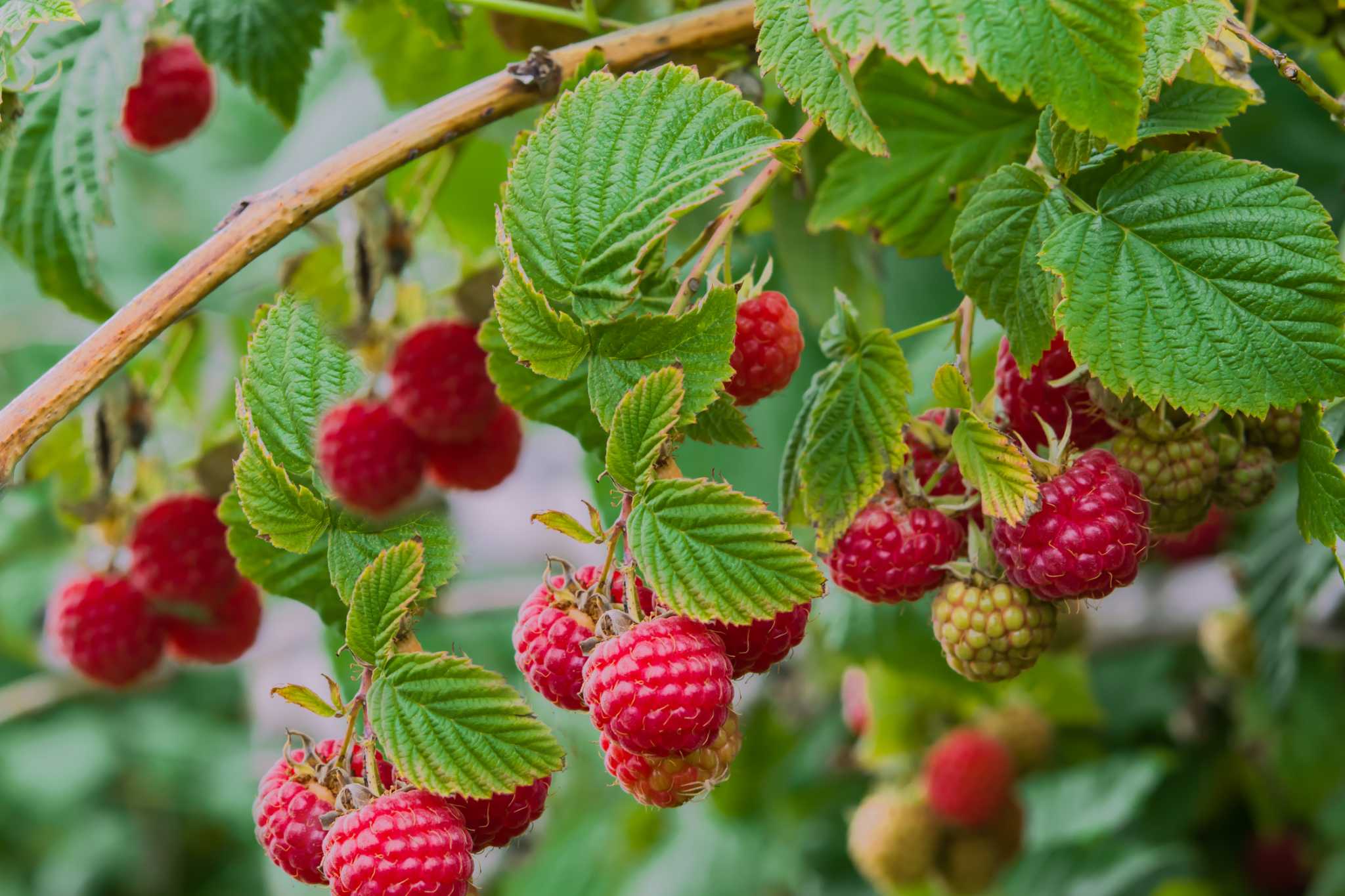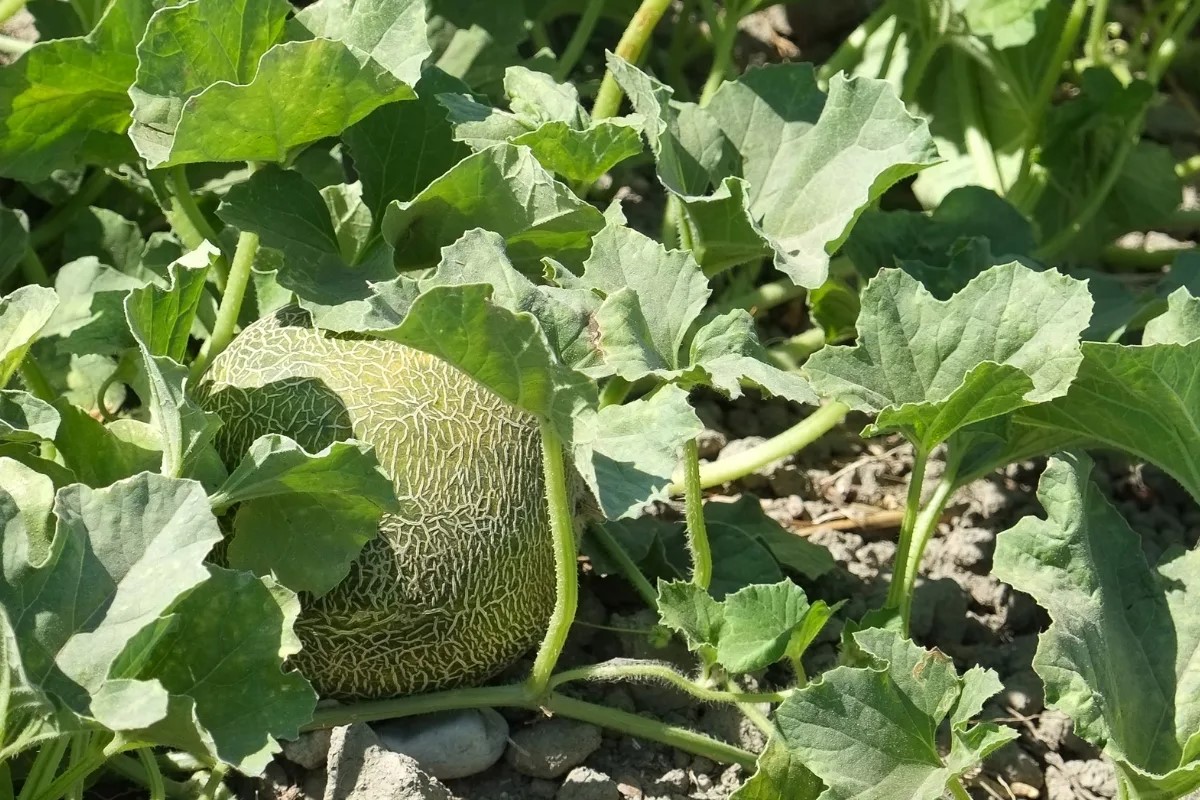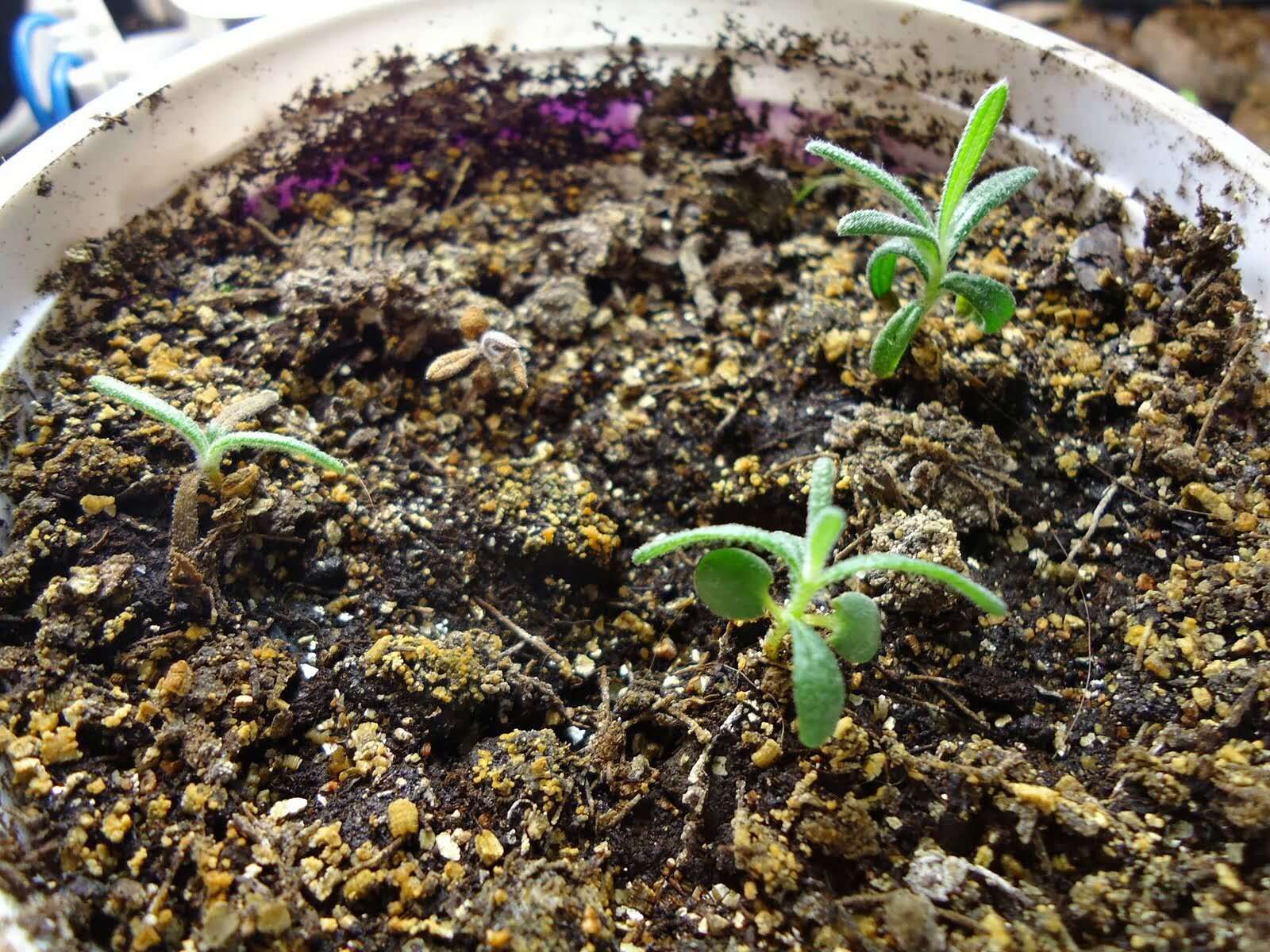Home>Garden Essentials>How Long To Grow Raspberries From Seed


Garden Essentials
How Long To Grow Raspberries From Seed
Modified: March 16, 2024
Learn how long it takes to grow raspberries from seed in your garden. Discover the step-by-step process for cultivating delicious, homegrown raspberries.
(Many of the links in this article redirect to a specific reviewed product. Your purchase of these products through affiliate links helps to generate commission for Storables.com, at no extra cost. Learn more)
Introduction
Growing raspberries from seeds can be an exciting and rewarding experience for gardeners. Not only do you get to witness the entire life cycle of these delicious berries, but you also have the opportunity to experiment with different varieties and flavors that may not be available in local nurseries. While raspberry propagation is commonly done through the use of cuttings or established plants, starting from seeds allows you to have a unique gardening adventure and develop a deeper connection with your garden.
In this article, we will guide you through the process of growing raspberries from seeds, from seed selection to caring for the seedlings until they are ready for transplanting. We will also provide you with a general time frame of how long it takes for raspberry seeds to grow into fully matured plants. So, roll up your sleeves and get ready to dive into the exciting world of raspberries!
Key Takeaways:
- Growing raspberries from seeds takes patience and care, with germination taking 2-8 weeks. Seed-grown plants may vary from the parent and can take 1-3 years to produce fruits.
- Raspberry seedlings need consistent moisture, sunlight, and support. Growing from seeds offers a unique gardening experience, but requires dedication and may not guarantee identical fruits.
Read more: How To Strain Seeds From Raspberries
Getting Started with Raspberry Seeds
Before you embark on the journey of growing raspberries from seeds, it’s important to gather all the necessary materials and understand the requirements of these particular seeds. Here’s what you need to get started:
- Raspberry Seeds: You can either collect seeds from fully ripe raspberries or purchase them from a reputable seed supplier. Make sure to choose a variety that is suitable for your climate and desired taste.
- Seed Trays or Pots: Opt for trays or pots that have drainage holes to prevent waterlogged soil.
- Seed Starting Mix: Use a lightweight and well-draining seed starting mix or make your own by combining equal parts of peat moss, vermiculite, and perlite.
- Clear Plastic Dome or Plastic Wrap: This will help create a greenhouse-like environment for the seeds during germination.
- Grow Lights or a Sunny Window: Raspberry seeds need sufficient light to germinate and grow. If you don’t have access to a sunny window, consider investing in grow lights.
- Watering Can or Spray Bottle: A gentle mist of water is essential for keeping the soil moist during the germination process.
Once you have gathered all the necessary materials, it’s time to start the process of germinating the raspberry seeds and watch them sprout into healthy seedlings.
Seed Germination Process
The seed germination process is a crucial step in growing raspberries from seeds. It’s important to follow these steps carefully to ensure successful germination:
- Stratification: Raspberry seeds require a period of cold stratification to break dormancy and simulate natural conditions. Moisten a paper towel and place the seeds on it. Fold the towel around the seeds and seal it inside a plastic bag. Place the bag in the refrigerator for 8 to 12 weeks.
- Prepare the Seed Trays: Fill the seed trays or pots with the seed starting mix, leaving about half an inch of space at the top. Gently press the soil to level it out.
- Sow the Seeds: Remove the raspberry seeds from the plastic bag and sow them evenly on the surface of the soil. Lightly press them into the soil, but avoid burying them too deep.
- Mist the Soil: Use a watering can or spray bottle to mist the soil with water until it is evenly moist. Avoid overwatering, as excess moisture can lead to fungal diseases.
- Cover the Tray: Place a clear plastic dome or plastic wrap over the seed tray to create a greenhouse-like environment. This helps retain moisture and heat, creating optimal conditions for germination.
- Provide Adequate Light: Place the seed tray in a location where it can receive plenty of light. If using a sunny window, make sure to rotate the tray regularly to prevent uneven growth. If using grow lights, position them about 6 inches above the seedlings.
- Maintain Moisture: Check the soil moisture regularly and mist it whenever it feels dry. The soil should remain consistently moist but not soggy throughout the germination process.
- Be Patient: Raspberry seeds can take anywhere from 2 to 8 weeks to germinate, depending on the variety and conditions. Be patient and resist the temptation to disturb the soil or check for germination too frequently.
Once the raspberry seeds have germinated and the seedlings have emerged from the soil, it’s time to shift your focus to caring for these delicate young plants.
Planting Raspberry Seeds
Once the raspberry seedlings have emerged and reached a height of about 2 to 3 inches, it’s time to transplant them into individual pots or a prepared garden bed. Follow these steps to ensure successful planting:
- Prepare the Planting Site: Choose a location that receives full sun or partial shade, with well-draining soil. Clear any weeds or debris and amend the soil with compost or well-rotted manure to improve fertility and drainage.
- Transplanting to Pots: If transplanting to individual pots, carefully remove the seedlings from the seed tray, taking care not to damage the delicate roots. Plant each seedling in a pot, ensuring that the soil level is at the same depth as it was in the seed tray.
- Transplanting to Garden Beds: If transplanting to a garden bed, dig holes that are slightly larger than the root ball of the seedling. Space the seedlings at least 2 feet apart to allow for adequate air circulation and future growth.
- Planting Depth: Place the seedling in the hole, with the roots gently spread out. Backfill the hole with soil, ensuring that the crown of the seedling (where the root meets the stem) is level with the soil surface.
- Watering: After planting, water the seedlings thoroughly to settle the soil and ensure good root-to-soil contact. Maintain moist soil throughout the growing season, but avoid overwatering, as raspberry plants are susceptible to root rot.
- Mulching: Apply a layer of organic mulch, such as straw or wood chips, around the base of the seedlings. This helps retain moisture, suppresses weeds, and regulates soil temperature.
It’s important to note that not all raspberry seeds will produce plants that are true to the parent plant. Seed-grown raspberries can exhibit variations in flavor, size, and other characteristics. If you’re specifically looking to replicate the qualities of a certain raspberry variety, it’s recommended to grow plants from cuttings or purchase established plants from reputable nurseries.
With proper care and maintenance, your raspberry seedlings will continue to grow and develop into mature plants that bear delicious fruits for you to enjoy.
Raspberries are typically grown from cuttings or transplants, as growing them from seed can take 2-3 years to produce fruit. It’s best to start with established plants for a quicker harvest.
Taking Care of Raspberry Seedlings
After transplanting your raspberry seedlings, it’s crucial to provide them with the proper care to ensure healthy growth and maximize their fruit-bearing potential. Here are some essential care tips for your raspberry seedlings:
- Watering: Keep the soil consistently moist, but not waterlogged. Raspberry seedlings have shallow roots and can easily suffer from drought stress. Water deeply and regularly, especially during dry periods, to ensure the soil remains evenly moist.
- Fertilizing: Apply a balanced fertilizer, such as a 10-10-10 or 14-14-14 formula, in early spring, when the seedlings start to show new growth. Follow the package instructions for the specific dosage, and avoid over-fertilizing, as it can lead to excessive foliage growth and reduce fruit production.
- Weed Control: Regularly weed the area around the raspberry seedlings to prevent competition for nutrients and water. Use hand-pulling or shallow cultivation to avoid damaging the shallow roots of the seedlings.
- Support and Training: As the seedlings grow, provide support to keep the canes upright. Consider using stakes, trellises, or a raspberry-specific support system to prevent the canes from bending or breaking under the weight of the fruit.
- Pruning: Once the seedlings are established and reach a height of about 2 feet, prune the canes to promote branching and encourage better fruit production. Remove any weak, damaged, or crossing canes to improve airflow and prevent disease.
- Pest and Disease Control: Monitor the seedlings for common pests like aphids, raspberry fruitworms, and Japanese beetles. Use organic pest control methods such as handpicking or spraying with neem oil to manage pest populations. Additionally, watch out for fungal diseases like powdery mildew and gray mold, and take appropriate measures such as proper air circulation and fungicide applications if needed.
By providing attentive care and addressing any issues promptly, you can ensure the healthy growth and development of your raspberry seedlings, setting the stage for a bountiful harvest in the future.
Read more: How Long To Grow Potatoes From Seed
Transplanting Raspberry Seedlings
Transplanting raspberry seedlings is an important step in their growth process, as it allows them to establish a strong root system and continue their journey towards maturity. Here’s a step-by-step guide to transplanting your raspberry seedlings:
- Timing: Wait until the seedlings have developed a sturdy root system and multiple sets of leaves before transplanting them. This is usually around 6 to 8 weeks after germination.
- Choose the Right Location: Select a sunny spot in your garden with well-draining soil. Raspberries thrive in slightly acidic soil with a pH of 5.5 to 6.5.
- Prepare the Soil: Before transplanting, prepare the soil by removing any weeds or grass and adding organic matter like compost or aged manure. This helps improve soil fertility and drainage.
- Spacing: Space the raspberry seedlings at least 2 to 3 feet apart to allow room for their growth and to facilitate air circulation.
- Transplanting Process: Dig a hole that is slightly wider and deeper than the root ball of the seedling. Gently remove the seedling from its container, being careful not to damage the roots. Place the seedling in the hole, ensuring that the topsoil is level with the ground. Backfill the hole with the soil, firming it gently around the base of the seedling.
- Watering: After transplanting, water the seedlings thoroughly to settle the soil and eliminate any air pockets. Continue to water regularly, keeping the soil moist but not waterlogged. This helps the seedlings establish themselves in their new location.
- Staking: If you’re transplanting tall raspberry varieties or if your garden is prone to strong winds, it’s advisable to stake the young seedlings for support. Use stakes or trellises to prevent the plants from bending or breaking.
- Mulching: Apply a layer of organic mulch, such as straw or wood chips, around the base of the seedlings. This helps conserve soil moisture, suppresses weed growth, and insulates the roots from temperature fluctuations.
Remember to monitor the transplanted seedlings closely and continue providing them with proper care. Regularly check for any signs of stress or disease, and address any issues promptly to ensure the successful establishment of your raspberry plants.
Growing Raspberry Plants from Seeds: Time Frame and Expectations
Growing raspberry plants from seeds is a longer and more variable process compared to propagating them from cuttings or purchasing established plants. It requires patience and careful attention to the needs of the seedlings. Here’s a general time frame and what you can expect when growing raspberries from seeds:
Germination: Raspberry seeds typically take around 2 to 8 weeks to germinate. However, it’s important to note that germination can vary depending on the variety of raspberry and the growing conditions provided. Factors like temperature, light, and moisture levels can influence the speed of germination. It’s important to maintain consistent moisture and the optimal temperature range of around 70 to 75°F (21 to 24°C) for successful germination.
Seedling Development: After germination, the raspberry seedlings will continue to grow and develop. The seedlings will produce their first set of true leaves, which will look different from the initial seed leaves. This stage usually occurs within 4 to 6 weeks after germination. During this period, it’s important to provide adequate light, water, and fertilizer to support healthy growth.
Transplanting: Once the seedlings have reached a height of 2 to 3 inches and have a well-established root system, they can be transplanted into individual pots or into a prepared garden bed. This usually happens around 6 to 8 weeks after germination.
Maturity and Fruit Production: It’s important to understand that growing raspberries from seeds will result in plants that may not be identical to the parent plant. Raspberry plants are typically cross-pollinated, which means there is genetic variability among the offspring. As a result, the flavor, size, and other characteristics of the fruits may differ from the parent plant. Additionally, raspberry plants grown from seeds take longer to reach maturity and begin fruiting compared to plants grown from cuttings or established plants. It may take 1 to 3 years for seed-grown raspberry plants to produce their first fruits.
Proper Care: While growing raspberries from seeds may require some extra time and patience, providing the proper care throughout the process is essential for success. Ensure the seedlings receive adequate sunlight, water, and nutrients. Protect them from pests and diseases, and provide support and pruning as needed. Consistent and attentive care will help the seedlings grow into healthy and productive raspberry plants.
It’s important to note that growing raspberries from seeds can be more challenging than other propagation methods, and there is no guarantee of success. However, the process can be rewarding and provide a unique gardening experience. If you’re looking for more immediate results or want a specific raspberry variety, consider using other propagation methods like cuttings or purchasing established plants.
Conclusion
Growing raspberries from seeds can be a fascinating and rewarding journey for gardeners. While it requires patience and attentive care, the experience of witnessing the entire life cycle of these delicious berries is truly fulfilling. Whether you’re a novice gardener or an experienced green thumb, growing raspberries from seeds allows you to experiment with different varieties and flavors while developing a deeper connection with your garden.
From choosing the right raspberry seeds to germinating them, planting, and caring for the seedlings, each step in the process is crucial for successful growth. Providing the proper conditions, such as adequate light, moisture, and nutrients, will help the seedlings thrive and develop into healthy plants.
It’s important to remember that raspberries grown from seeds may exhibit variations in flavor, size, and other characteristics compared to their parent plants. Additionally, the time frame for seed-grown raspberries to reach maturity and produce fruits can be longer than for plants propagated through other methods.
Nevertheless, with proper care and attention, you can enjoy the journey of growing raspberry plants from seeds. Whether you choose to grow them in pots or transplant them into your garden, the rewarding experience of harvesting your homegrown raspberries will make all your efforts worthwhile.
Remember to be patient, monitor for pests and diseases, provide the necessary support, and stay dedicated to their care. With time, you’ll have a beautiful raspberry patch that will provide you with a bountiful harvest for years to come.
So, roll up your sleeves, get your gardening tools ready, and embark on the exciting adventure of growing raspberries from seeds. Happy gardening!
Frequently Asked Questions about How Long To Grow Raspberries From Seed
Was this page helpful?
At Storables.com, we guarantee accurate and reliable information. Our content, validated by Expert Board Contributors, is crafted following stringent Editorial Policies. We're committed to providing you with well-researched, expert-backed insights for all your informational needs.















0 thoughts on “How Long To Grow Raspberries From Seed”